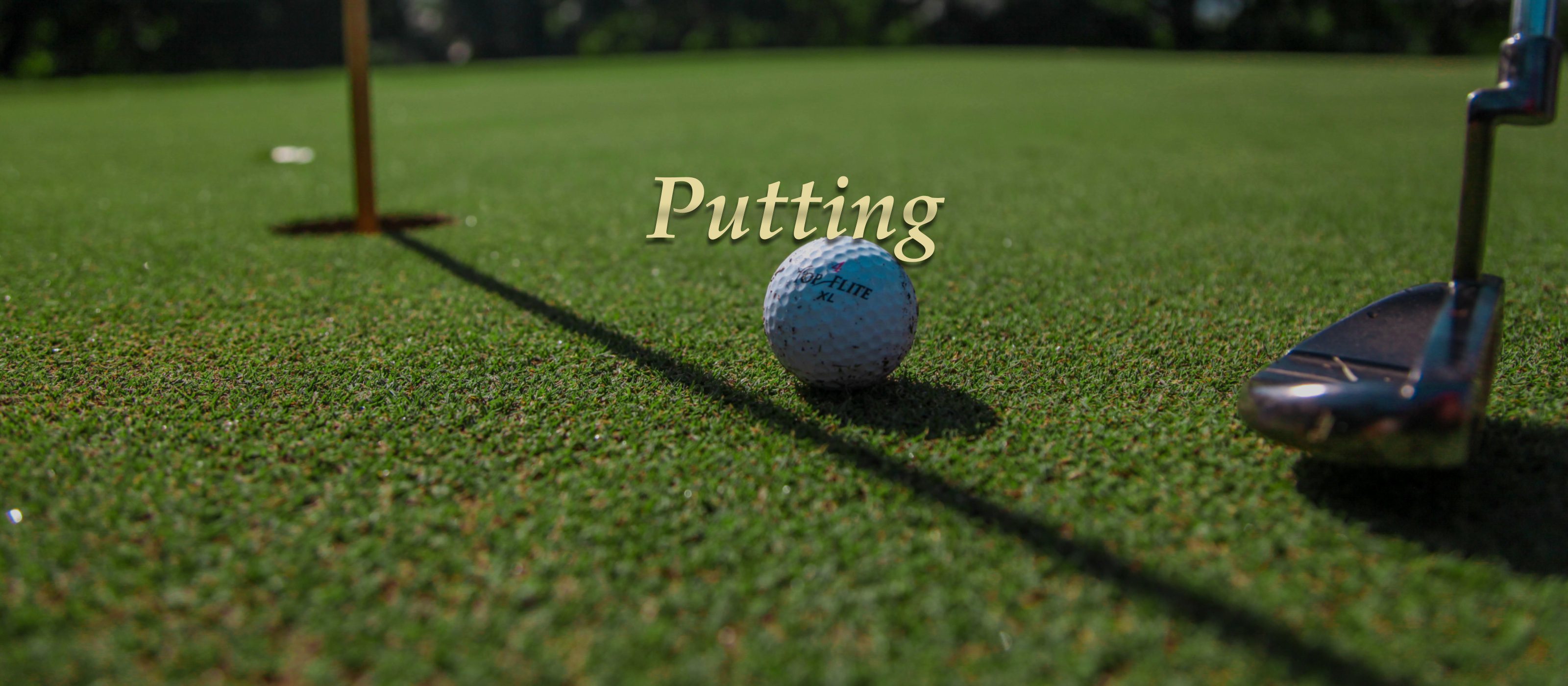PUTTING
Putting easily can be the part of the game by which you either win or lose. Too many amateur players focus so much on their long game that putting almost seems like an afterthought.
This approach is a mistake. Improving your putting game could be the key to hitting the low scores that you used to only dream about. Let's take a closer look at some tips that will help you achieve your best putting game.
THE SET UP
When you set up correctly, you are better prepared to sink the ball. As you set up to putt, keep in mind that your left hand is your direction hand. Consider practicing putts using only your left hand to reinforce the idea that your hands are equally important.
Another idea to remember as you set up for a putt is to roll the ball rather than hit it. Try opening your stance while slightly favoring your weight on your left foot. Keep the putter's shaft leaning toward the target. As you move through the stroke, be certain to keep the putter low to the ground beyond the point at which you make contact with the ball.
Many of the golfers I work with have benefited from slightly changing their grip at set up. The club is mainly held by the fingers with the shaft running up the lifeline of your left hand. Feel free to allow the right forefinger to go down the shaft, but resist the temptation to use it to steer.
As a bonus tip for setting up a putt, try not to address the ball for too long before beginning your swing. To prevent this, I sometimes suggest looking not at the ball itself but at a spot directly in front of the ball and in line with the target.
BALL POSITION
When working with a client, I frequently recommend setting up a putt with the ball positioned just slightly forward of the mid-point of their stance. However, it also is necessary to determine how close to the ball the body should be. Most golfers like to position themselves so that the ball is directly below their eyes.
Unfortunately, many golfers use a putter that is too long for their body. This tends to cause the eyes to be too far back rather than directly over the ball. It may be necessary to choose a different putter or choke down on your current putter to assume the correct ball position.
THE GRIP
You have options when it comes to gripping your putter, and that is certainly something with which we can experiment when you sign up for golf lessons in Orlando.
The reverse overlap putting grip is universally popular and relatively easy to achieve. It helps to prevent the golfer's tendency to roll over their hands during the stroke.
Grasp the putter with your left hand so that it rests in the crease of the palm and runs under the first knuckle of the index finger. Allow that index finger to wrap loosely around the left side and rear of the putter's grip. The left thumb rests downward on the center of the grip.
Place your right hand so that its lifeline goes over the left thumb. The right thumb can run down the grip's center or just slightly to the left of center. The fingers on the right hand wrap around the grip's right side and slip under the index finger of the left hand.
One of the advantages of using this grip is that it provides a straight line from the elbows, through the forearms and right down to the head of the putter. A simple rock of the shoulders is all that's needed to strike the ball.
READING THE GREEN
Frequently, the best thing you can do to more successfully read a green is to walk around the hole in a relatively wide radius. This helps you to visualize how to find a straight putt to the hole. Ideally, you'll aim for the top of the break so that the ball will naturally roll toward the hole.
Recall that no green is perfectly flat. This makes it essential to gauge the green's overall slope. Be on the lookout for slope as you approach the green, and take a moment to walk toward the hole and back again. This gives you a view not only of the hole but also the side angles and the position in which your ball is sitting.
Visualization can be a critical component of successfully reading a green. Imagine yourself hitting the ball and the ball's path so that you can identify any potential problem areas. Some golfers have improved their success by envisioning a white line or train tracks between their ball and the hole.
STRATEGY
No matter where on the green your ball is placed or how the green breaks, it's important to focus on following through and holding. Too many golfers either move while they putt or directly after hitting the ball. The putting movement really only involves the shoulders while the rest of the body remains still. After making contact with the ball, follow through with the putter and hold your position. Check your alignment while you continue to hold. If the club's face is toward the target, you know you did well. If not, then you know that more fine tuning is needed.
MAKE AN APPOINTMENT TODAY
Are you looking to shave a few points off of your golf game? If so, then it's sensible to improve your putting. Sign up for Orlando golf lessons with a trusted professional today.


